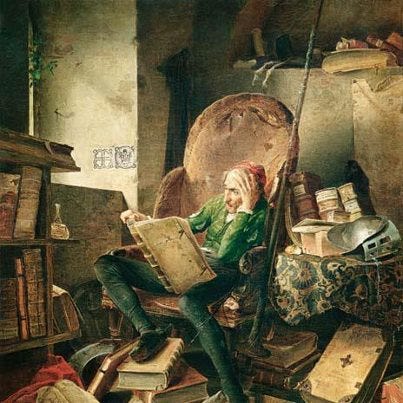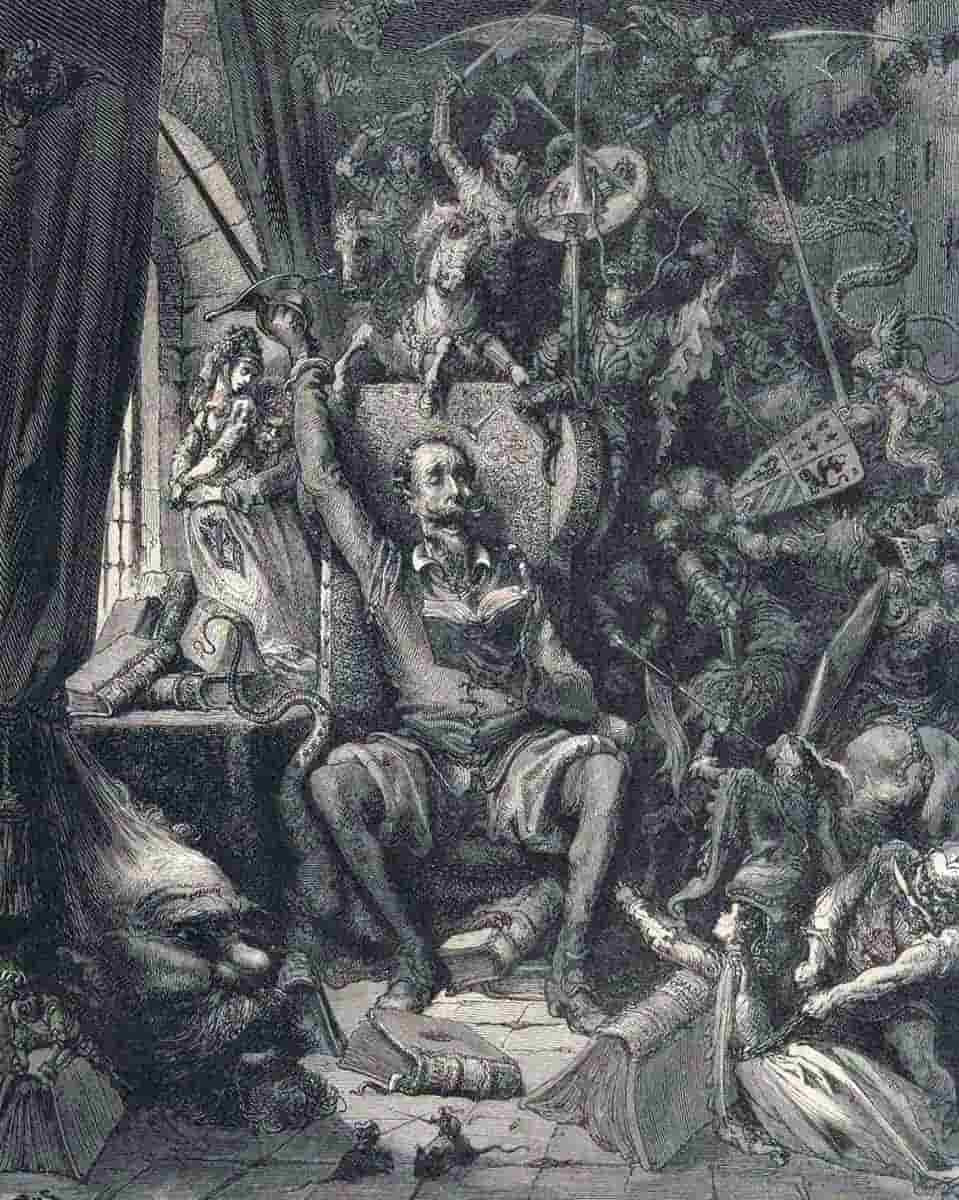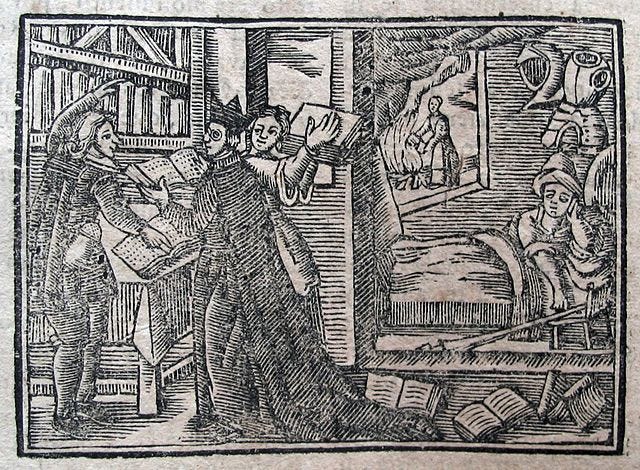The Ingenious Gentleman Don Quixote of La Mancha read a lot of books and this worried the people in his life. His infatuation with chivalric books lead him to decide to become a knight-errant. Don Quixote is one of the most widely read classics of Western literature. It was published in two parts—part 1, 1605; part 2, 1615)
In chapters 6 and 7 his niece, the housekeeper, the parish curate, and the local barber burn most of Don Quixote’s chivalric and other books.
Destruction of Don Quixote's library (Chapters 6–7)
While Don Quixote is unconscious in his bed, his niece, the housekeeper, the parish curate, and the local barber burn most of his chivalric and other books. A large part of this section consists of the priest deciding which books deserve to be burned and which to be saved.
In these chapters Cervantes satirically critiques both the excesses of the chivalric genre and the censorship of the time (echoing the Spanish Inquisition’s book burnings). See footnote for some of the books.1
Don Quixote is the Best Work of Fiction According to 100 Authors
Amadís de Gaula
A famous Spanish chivalric romance, originally written by Garci Rodríguez de Montalvo (first printed in 1508). Spared from the burning by the priest because of its quality and influence.
Los cuatro libros del virtuoso caballero Amadís de Grecia
A sequel to Amadís de Gaula, written by Feliciano de Silva. This is one of the many continuations and imitations that proliferated after the original’s success.
Don Olivante de Laura
Written by Antonio de Torquemada, this is another chivalric romance. The priest mocks its absurdity and sentences it to the fire.
El Caballero Platir
Another romance of chivalry, condemned to be burned for its lack of merit in the priest’s eyes.







I always liked this episode in Don Quixote ... The funny part is that the priest and the barber keep picking ones to exclude, because they happen to like this one or that one. Even book burners have preferences, I guess.